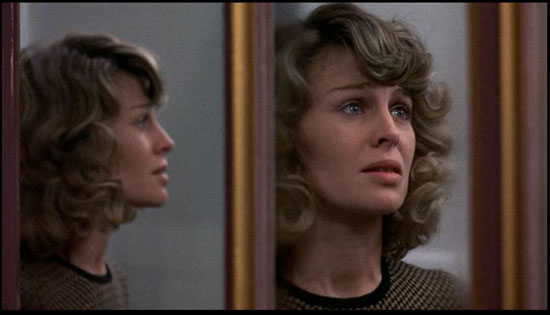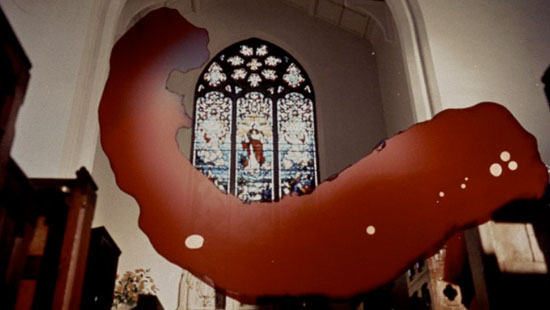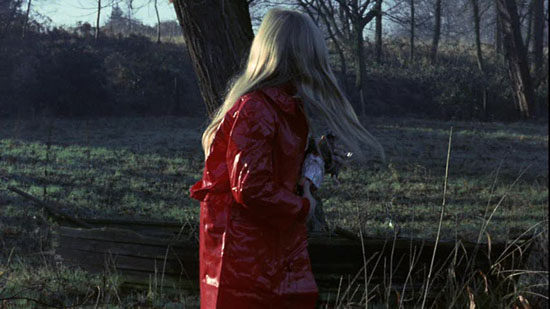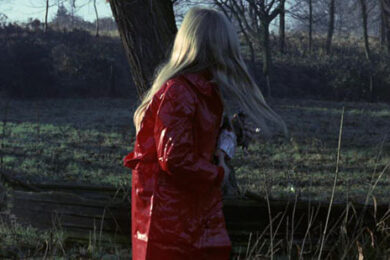According to Allan Scott, co-writer of Don’t Look Now, Nicholas Roeg is a "dreadful director" and their 1973 collaboration resulted in a "seriously dingy film". Scott wasn’t being entirely serious as he introduced Roeg along with a newly remastered version of the fêted suspense thriller but Roeg has certainly been the beneficiary of a significant turnaround in popular opinion. While his name was once synonymous with an exasperating habit of turning simple stories into cinematic labyrinths, he has now been the subject of a significant career-long retrospective at the BFI and Don’t Look Now has recently been voted the Best British Film of all time by Time Out magazine.
Roeg talks in a restless, fragmented fashion, expressing himself cautiously throughout the interview which followed the screening of Don’t Look Now. His speech is far from linear and he steadfastly refuses to pinpoint the centre for you, something that resembles his filmmaking style: the finished product threatening to disintegrate into incoherence, with all sense of narrative discarded in favour of wave after wave of imagery. His films have often sidelined meaningful dialogue in favour of action which is more indicative of emotion than plot advancement. Roeg remarks that "what always fascinated me [about film] is that step beyond the motion, movement and sound of people, that reflection of life and life’s incidents and little movements. One must always see the event as ever changing." Scott confirms this was the case with Don’t Look Now: "Nicholas hates exposition. No-one comments on why they’re there, it’s all through the story."
Roeg’s singular vision is not for everyone. His cinematic excursions are often marked by a lack of narrative control (see, for example, Bad Timing) which Roeg himself attributes to his reliance on the forces of chance during the filmmaking process. At his best, Roeg certainly manages to combine the past successes of the British cinema with the groundbreaking approach laid forth by the French New Wave. Yet this narrative eccentricity, aligned with a penchant for rather cold and emotional protagonists, often overshadows his innovative techniques.

Don’t Look Now was originally a Daphne de Maurier short story, whom at the time was best known for the works Hitchcock adapted for the screen – Rebecca, The Birds and, to a lesser extent, Jamaica Inn. The influence of Hitchcock on Roeg is highlighted by Don’t Look Now’s near-duplication of a classic scene from The 39 Steps – Hitchcock cuts from a woman’s scream to that of a train whistle, while Roeg cuts from Laura Baxter’s shriek in England to that of a jackhammer in Venice.
The casting of Julie Christie and Donald Sutherland as Laura and John Baxter was, according to Roeg, again down to chance: “They ended up being first choice – I wanted Julie and liked the idea of a Canadian in the main male role but we were told we’d never get them. Julia was on McGovern’s campaign (her then-boyfriend Warren Beatty was an advisor on Senator George McGovern’s unsuccessful presidential campaign of 1972) and Donald had just started a movie in Mexico. But the McGovern campaign fell through as did the Mexican film – they were free. Destiny".
Roeg attributes a similar sense of serendipity to a large portion of the film production: "The script has a life separate from itself and chance can never be excluded. The church we eventually used was Nicolò dei Mendicoli (St. Nicholas of the Beggars) and things fell into place after this location was secured – they were actually restoring the church itself at the time. You can see a poster outside declaring ‘Venice in Peril Fund’. [Also]…the incident where the scaffolding collapses under Sutherland’s character – the scaffolding was already there." The Venice portrayed in the film is certainly not the city one would find in a travel brochure. Our expectations are inverted as we see the city permanently engulfed in a dolorous winter grey, wet and, by night, an anaemic dark.

The prominent usage of Venice ensured Roeg could fill the screen with Catholic imagery, but to contrast the monochromatic backdrop, we are presented with repeated instances of the colour red – John and Laura’s daughter wears a red raincoat when she drowns, a drop of water flows red on one of John’s work slides and Laura wears prominent red boots on her return from England. Roeg’s intention is surely to prime the audience into thinking it must mean something, but this never becomes clear.
The infamous sex scene between Sutherland and Christie is where the film does truly succeed as Roeg manages to expand sex into love, certainly no mean feat: “I imagined that, after the loss of their child, this would be the first time they made love for a long time. That thought had a truth to it and a reason for being there. It wasn’t a seduction – when discussing [the scene] with Donald and Julie, we decided to intercut with Donald sitting down, smoking, having a drink and Julie putting on her clothes. It’s the subconscious, a step towards normality”. This scene is arguably the finest example of Roeg’s cinematic vision, where separate incidents are magically interwoven in the cutting room. Taken together, the two time periods depicted in this scene merge together, displaying the maturity, tenderness and depth of their relationship. At no other point in the film does Roeg infuse his characters with such a heightened emotional state.
Roeg concludes by remarking on the trajectory of his career: "Films occupy whole sections of your life – all my films have a stamp of my life in them. My films seem to mirror life in how they develop – the child prodigy doesn’t always have the final say!" Certainly, the delayed response to Roeg’s work has deservedly shed light on his wickedly independent streak and flair. His use of concurrence to tell his stories, of past pleasures coalescing with future terror imbues his films with a unique power. However, this can occasionally spill over into a bleak harshness as in 1980’s Bad Timing and, almost forty years after it’s original release, Don’t Look Now seems very much a film of its era. The critic Neil Sinyard maintains that "Roeg is a complete filmmaker who… could not express himself in any other form". You could expand this to argue that Roeg could really only express himself in the 1970s, which was the ideal environment for the director to fully explore and question the art of film in the manner of Antonioni or Resnais.
Such criticisms are unlikely to trouble Roeg. His entire career is suffused with a defiant refusal to offer audiences an easy solution to a problem. Commenting on the closing scene of Don’t Look Now, Roeg could have been commenting on his own idiosyncratic streak when remarking that "We all have a certain sense of wonder, premonition, coincidence. It has a touch of spirituality. One of the last shots is of Julie on the barge, covered with a veil. [Despite her husband’s death], they couldn’t take the love away from her. The two women nearby were crying but she has a smile of defiance. When she did, it was incredibly defiant – has a certain sense of mystery."



